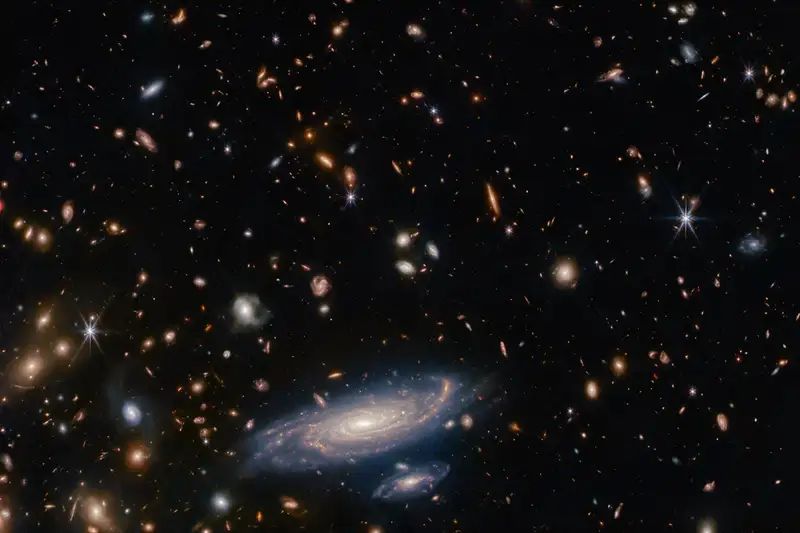Huge young galaxies seen by JWST may upend our models of the universe
11:58, 23 February

ESA/Webb, NASA & CSA, A. Martel
Galaxies spotted by the James Webb Space Telescope seem far too massive to have formed so early on in the universe’s history, which could be a problem for our ideas of galaxy formation, "NewScientist" reported.
- Share on Facebook
- Share on VK
- Share on Twitter
Many galaxies in the early universe seem to be far more massive than expected. Researchers using the James Webb Space Telescope (JWST) spotted galaxies with masses up to 100 billion times that of the sun that must have formed faster than current models can explain.
Ivo Labbé at Swinburne University of Technology in Australia and his colleagues measured the distances to six massive galaxies using a phenomenon called redshift. Objects that are further from Earth are moving away from us more quickly, which causes them to appear more red than nearby objects. They found that these galaxies were all around 30 billion light years away, meaning that they formed within 700 million years of the big bang.
“I would have guessed that galaxies like this would not exist this early in the universe,” says Pieter van Dokkum at Yale University in Connecticut, part of the research team. That is because the galaxies all had masses at least 10 billion times the mass of the sun, with one weighing in at 100 billion solar masses. From models of galactic evolution, we would expect galaxies as young as these to be relatively low-mass, without many stars at all, and then grow over time until they became more like our own Milky Way galaxy, which has a mass of about 1.5 trillion solar masses.
While these young galaxies are massive, they are also surprisingly compact. “What could be going on is that the centres of galaxies form very early, earlier than we thought, then the rest of the galaxy builds up around them,” says van Dokkum. “I suspect that we’re looking at not finished products, but beginnings that happened very quickly.”
The exact mechanism behind this “fast-track” galaxy formation – or galactic core formation, as it may be – remains to be seen. “If all of this holds up with further investigation, then we are looking at having to rethink about some of the early history of galaxy formation,” says Andrew Pontzen at University College London.
Further investigation is crucial though, Pontzen and the researchers say. That follow-up will consist of detailed observations and analysis of the galaxies’ light spectra with JWST, which van Dokkum says could take about a year.
If these findings do hold up, it may be a problem for our understanding of the universe more generally, not just galaxy formation. “It was pointed out to us after we submitted the paper that there wasn’t actually enough gas in the universe at that point to form [as many massive galaxies as this study suggests] – and that was a bit of a shocker,” says Labbé. “If you form these monsters, and they contain more stars than the available gas in the universe, that’s a bit of a problem.” That may mean we have to take a close look at our models of the early universe and its contents.






